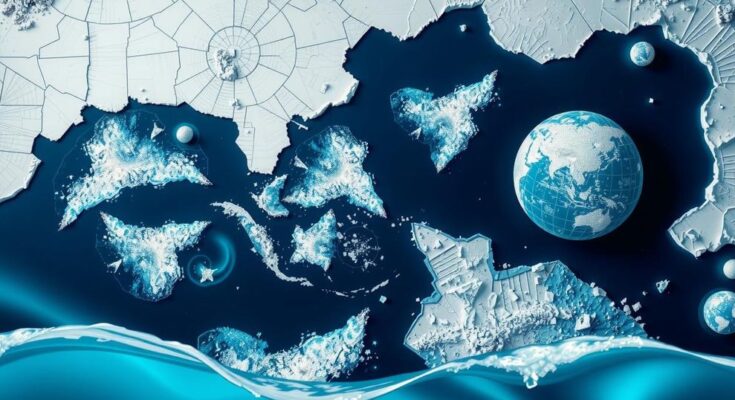An international collaboration, ‘Krill from Space,’ has been launched to monitor krill populations around Antarctica using satellite technology. This initiative aims to provide detailed data to support sustainable fishing in the Southern Ocean. Krill are crucial to the marine food web and play a significant role in the ocean’s carbon cycle. The project is backed by WWF, the University of Strathclyde, and the British Antarctic Survey following the COP26 in Baku, Azerbaijan.
An international initiative is underway to monitor krill populations around Antarctica using satellite technology. This project aims to collect precise data to inform sustainable fishing practices in the Southern Ocean, leveraging changes in the water’s red coloration, which indicates the presence of these tiny shrimp. Krill are a fundamental part of the marine ecosystem, serving as a primary food source for numerous species including whales, squids, and penguins.
The ‘Krill from Space’ project was officially launched at the 26th Conference of the Parties (COP) for the Paris Climate Agreement held in Baku, Azerbaijan. It is a collaboration between prominent organizations, including the World Wildlife Fund (WWF), the University of Strathclyde, and the British Antarctic Survey, and seeks to establish a comprehensive monitoring program for krill populations.
Dr. Cait McCarry from the University of Strathclyde elaborated on the methodology, stating, “We start with seawater, then we add in a krill and take a measurement. Then we add another krill and take another measurement.” This innovative approach involves understanding how the presence of krill affects the light absorption in seawater.
Rod Downie, chief polar advisor at WWF-UK, emphasized the urgency of the initiative, noting, “With sea ice declining and industrial fishing growing, we urgently need to better manage the fishery and protect krill habitats.” The data gathered could play a critical role in establishing marine protected areas for the sustainability of krill populations.
Krill contribute significantly to the ocean’s carbon cycle by consuming phytoplankton and subsequently depositing carbon at the ocean floor through their droppings. Despite their small size, they are estimated to sequester 300,000 metric tons of carbon, which parallels the daily emissions produced by the United Kingdom.
However, the populations of Antarctic krill are declining due to rising sea temperatures and the loss of their protective sea ice habitats. David McKee, a physicist at Strathclyde, remarked on the breakthrough potential of this monitoring method, stating, “This is a ground-breaking effort to develop a new way to monitor krill swarms at the surface.”
The collaboration signifies a significant step towards supporting international conservation efforts aimed at sustainable management of Antarctic species, particularly krill, which are vital for countless marine predators and the overall health of the Southern Ocean.
The ‘Krill from Space’ initiative represents a promising advancement in marine monitoring, combining satellite technology with scientific research. This partnership aims to enhance the understanding of krill populations, vital for the Southern Ocean ecosystem and essential in mitigating climate change impacts. Through collaborative efforts, there is hope for improved management of krill fisheries and enhanced protection of their habitats. The urgency of this effort is underscored by ongoing environmental challenges, as krill populations face threats from industrial fishing and climate-induced habitat changes. The potential benefits of this monitoring program extend beyond the immediate conservation of krill; they may contribute to broader ecological balance and carbon cycling in the oceans.
Original Source: www.goodnewsnetwork.org




